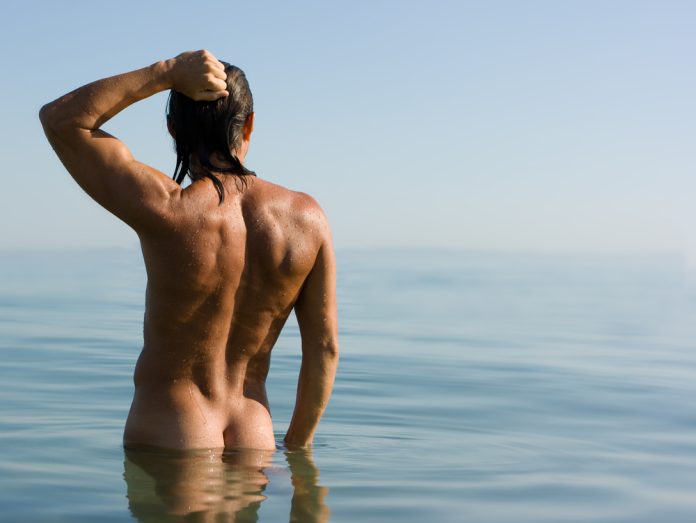Nude photography can feel like one of the most intimidating genres for beginners — and understandably so. You’re working with a subject that’s deeply personal, culturally sensitive, and often misunderstood. For many new photographers, the idea of directing a nude shoot brings up nervousness about professionalism, trust, and artistic intent.
But here’s the thing: nude photography has been part of art for centuries, long before cameras existed. When approached with respect and creativity, it’s not about shock or exploitation. It’s about storytelling, beauty, and capturing the human form as art.
If you’ve ever been curious about stepping into this genre, this guide is for you. We’ll walk through the basics — from understanding the art form and preparing yourself, to working with models, creating a professional environment, and building your skills. By the end, you’ll see that nude photography, while challenging, is also one of the most rewarding paths you can take as a photographer. As you delve deeper into this craft, you’ll discover various nude male photography techniques that can elevate your work and enhance your creative expression. Experimenting with light, angles, and composition will help you capture the human form in its most artistic essence. Remember, the goal is to celebrate the beauty and vulnerability of the subjects, fostering an environment of trust and mutual respect. As you refine your skills, you’ll learn about the best poses for men in photography, which can transform the mood and narrative of your images. Incorporating these poses not only showcases the physique but also highlights the subject’s personality, making your work feel more intimate and engaging. Embrace the journey of growth in this art form and allow each session to teach you something new about both the craft and your subjects.
Table of Contents
- Understanding Nude Photography as an Art Form
- Preparing Yourself as a Photographer
- Finding and Working with Models
- Creating a Safe and Professional Environment
- Technical Basics: Gear, Lighting, and Setup
- Posing and Directing
- Post-Processing: Editing with Respect
- Ethics and Legal Considerations
- Tips for Growing as a Nude Photographer
- A Celebration of Humanity
- FAQs
Understanding Nude Photography as an Art Form
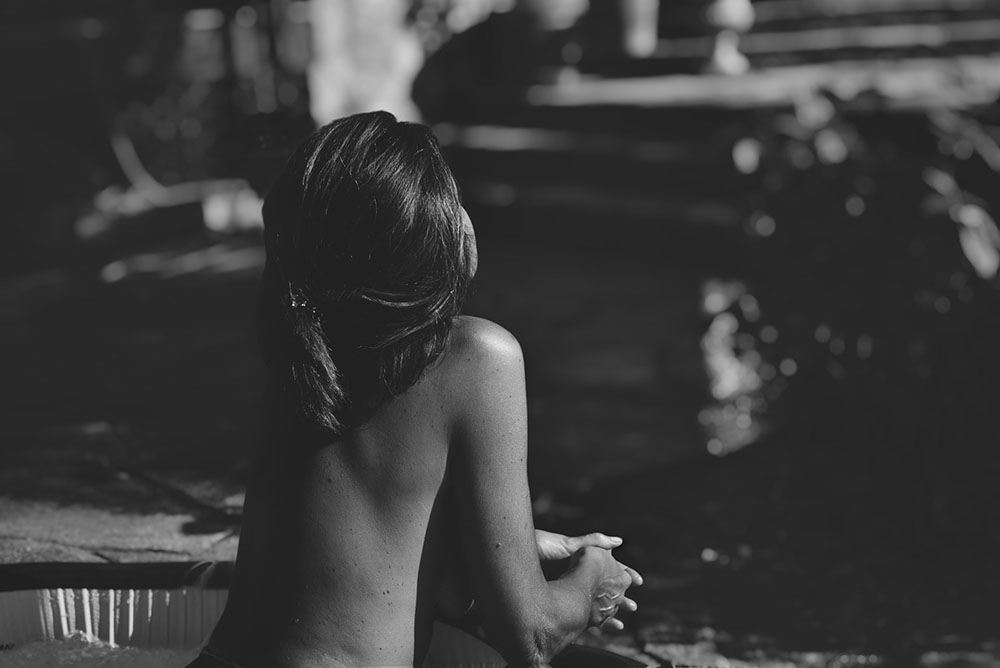
Photo by Piermario Eva on Unsplash (license)
Before picking up your camera, it helps to frame nude photography in its proper context: as art.
For thousands of years, artists have used the nude body to explore beauty, spirituality, mythology, and emotion. Ancient sculptures celebrated athleticism and idealized form. Renaissance painters like Botticelli and Michelangelo used nudity to explore themes of purity, sin, and divine creation.
Photography, when it emerged in the 19th century, simply extended this tradition into a new medium. Early photographers used nude studies for reference in painting and sculpture, while pioneers like Edward Weston and Ruth Bernhard pushed it into the realm of fine art.
The difference between artistic nude photography and explicit imagery usually comes down to intent and presentation. Artistic nudes are created to tell a story, capture mood, or explore form and light. The subject is treated with dignity and collaboration, not objectification. Keeping this distinction in mind helps beginners approach the genre with the right mindset.
Preparing Yourself as a Photographer
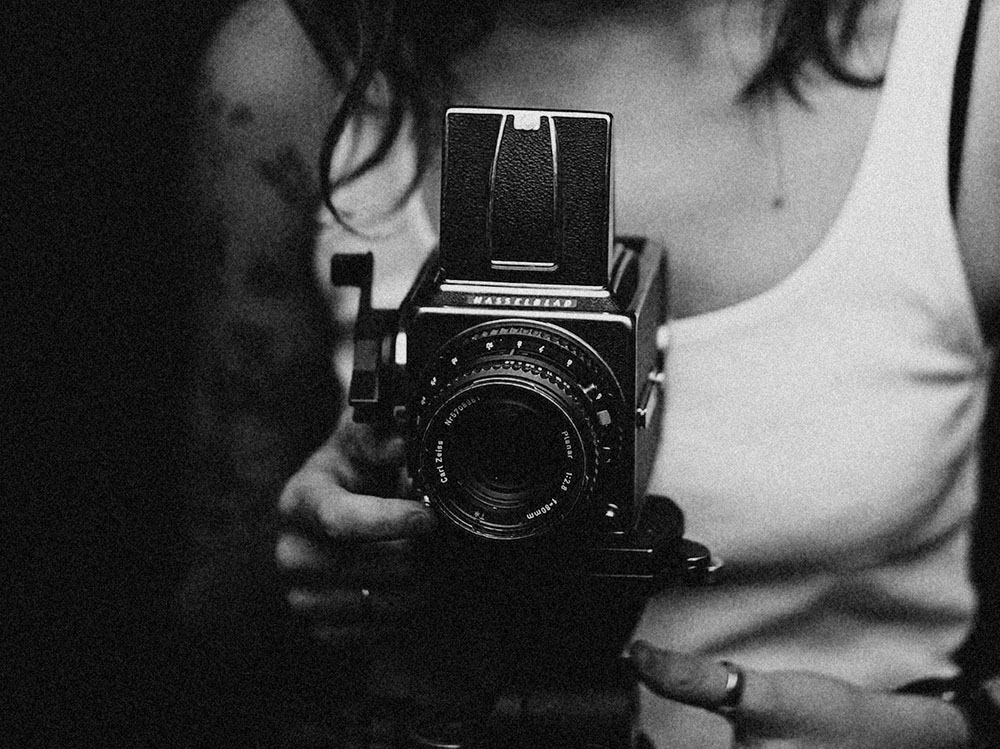
Photo by Alexey Demidov on Unsplash (license)
Before you invite anyone else into the process, it’s important to prepare yourself — mentally and professionally.
- Respect the genre: Nude photography is intimate. If your approach is casual or unserious, it will show in your images and erode trust with your subject.
- Study other photographers: Look at the work of Weston, Bernhard, Mapplethorpe, or contemporary artists who inspire you. Notice how they use light, pose, and mood to tell stories.
- Know your comfort level: If you feel uncomfortable directing a nude shoot, it will affect the model too. Practice giving confident, clear direction in clothed portrait sessions first.
- Be professional in communication: The way you talk about your work — in messages, emails, or on your website — should reflect professionalism. Avoid language that could be misinterpreted.
Preparation isn’t just about technical skill. It’s about showing your future models that you understand the responsibility of photographing someone in such a vulnerable state.
Finding and Working with Models
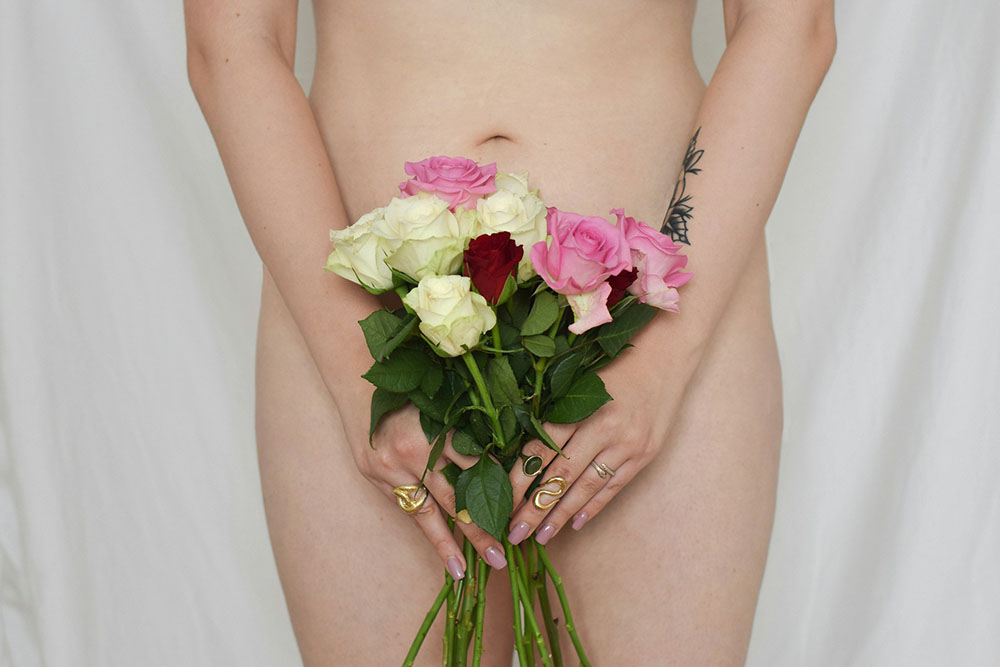
Photo by Vanessa Votta on Unsplash (license)
One of the first challenges beginners face is finding someone willing to pose. Fortunately, there are professional avenues available.
- Modeling platforms: Communities like Model Mayhem, PurplePort, or photography groups on social media can connect you with experienced nude models.
- Workshops and classes: Many photo workshops include figure study sessions with professional models, offering a safe environment for practice.
- Networking: Over time, word of mouth and reputation may lead models to approach you, but as a beginner, you’ll likely need to do the outreach.
Once you’ve found a potential collaborator, communication is key.
- Discuss boundaries in advance: Clarify poses, levels of nudity, and any off-limits areas before the shoot.
- Use model releases: A signed release protects both you and the model by defining usage rights for the images.
- Collaborate: Ask for their input. Experienced models often have great posing instincts and can help bring your vision to life.
Remember: this is a partnership. Treat your model as a collaborator, not just a subject.
Creating a Safe and Professional Environment
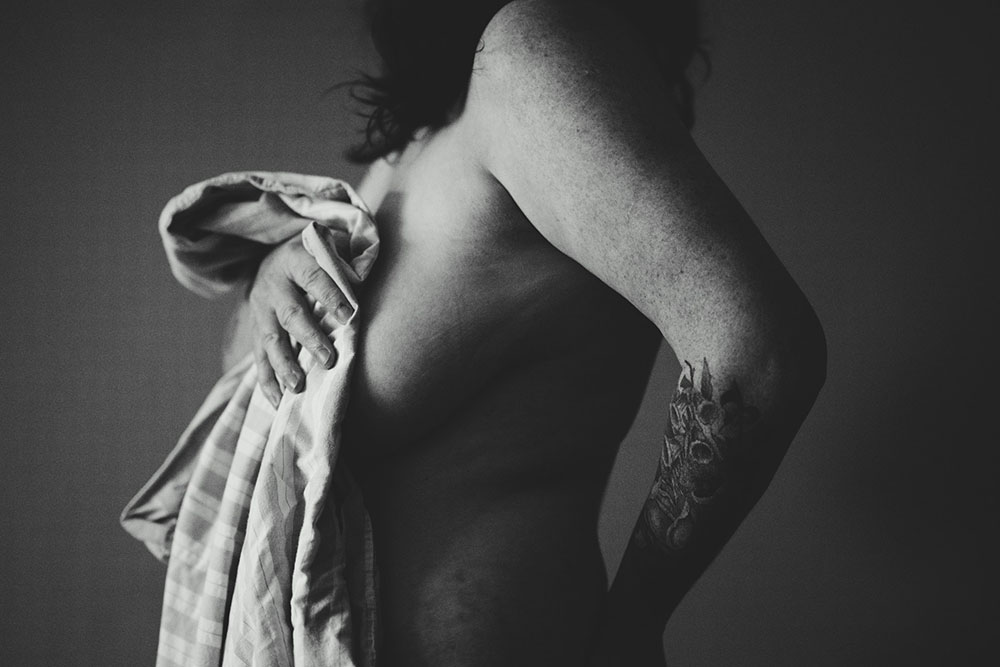
Photo by Annie Spratt on Unsplash (license)
Even the most skilled photographers won’t get good results if the environment feels uncomfortable. The atmosphere you create is just as important as your technical setup.
- Keep it private: Use a closed studio space or secluded location where interruptions are unlikely.
- Limit the team: Beginners should work one-on-one whenever possible. If you need an assistant, make sure the model is comfortable with that person being present.
- Professional demeanor: Speak respectfully, avoid unnecessary physical contact, and explain any adjustments clearly.
- Encourage feedback: Check in regularly — “Are you comfortable?” or “Do you need a break?” Small gestures go a long way.
The goal is to create an ethical nude photography space where your model feels safe, respected, and able to focus on the artistic process. When people feel secure, their poses and expressions naturally become more authentic.
Technical Basics: Gear, Lighting, and Setup
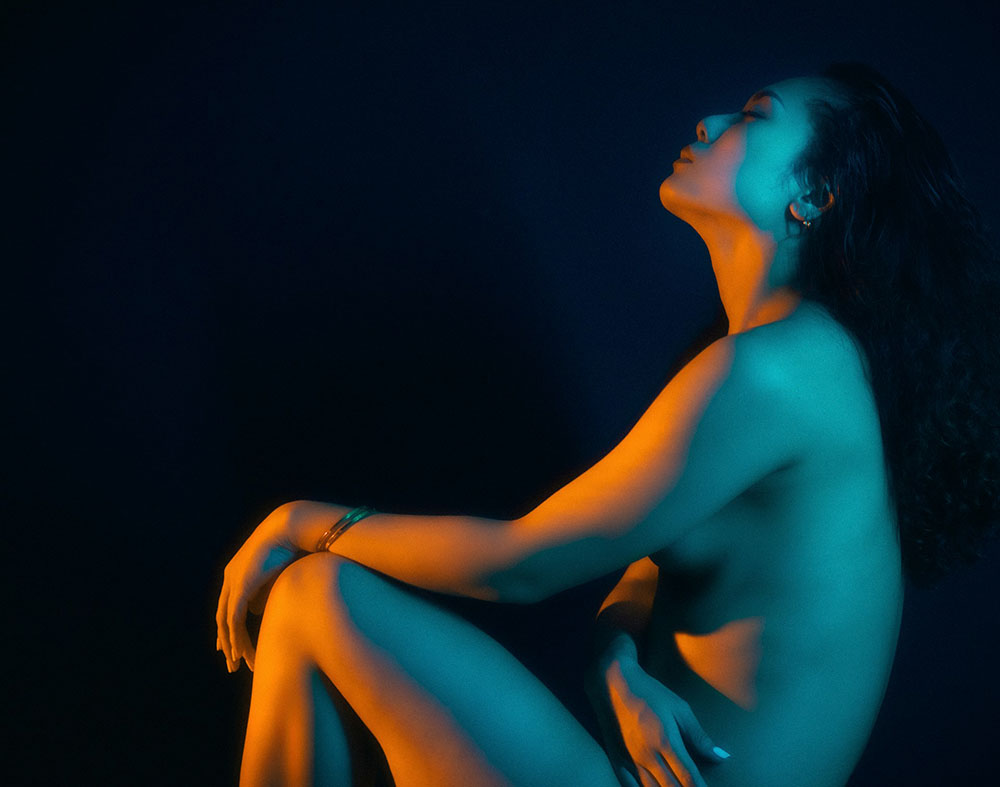
Photo by Chris Yang on Unsplash (license)
You don’t need a warehouse full of equipment to start in nude photography. What you do need is an understanding of how gear and light affect the story you’re telling.
- A DSLR or mirrorless camera with good dynamic range.
- A prime lens (like a 50mm or 85mm) for flattering portraits and shallow depth of field.
- A tripod for steady framing.
Lighting basics:
- Natural light: Window light is one of the most forgiving and beautiful options for nude photography. Soft daylight can create intimacy and mood.
- Studio lights: A single softbox or umbrella can mimic window light. More advanced setups (like rim lights or gels) can add drama once you’re comfortable.
- Shadows matter: In nude work, shadows aren’t mistakes — they’re tools to sculpt the body and add emotion.
Backdrops and props: Keep them simple. A plain wall, fabric, or minimal props often work best to keep attention on the subject and story.
Posing and Directing
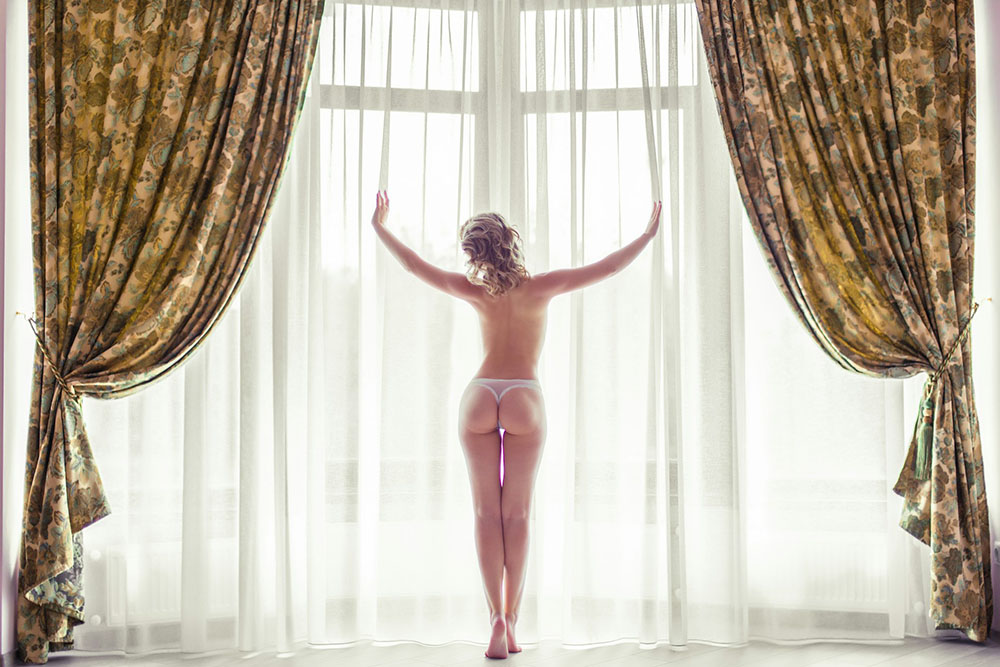
Photo by Vitaly Nikolenko on Unsplash (license)
Directing poses can be one of the hardest parts for beginners — especially in a nude shoot. The key is to start simple.
- Begin with natural poses: Standing, sitting, or reclining in comfortable positions.
- Watch hands and feet: Stiff fingers or awkward feet can ruin an otherwise strong image. Encourage relaxation.
- Encourage movement: Instead of rigidly posing, ask the model to shift slowly between positions. This creates fluid, natural shots.
- Use body language: A curled posture may suggest vulnerability; an open, expansive stance can communicate strength.
- Expressions matter: Direct gaze vs. averted gaze can completely change the mood.
Give direction clearly and respectfully. Instead of saying, “Do something sexy,” say, “Try crossing your arms softly” or “Turn your head toward the light.” Precision removes awkwardness.
Post-Processing: Editing with Respect
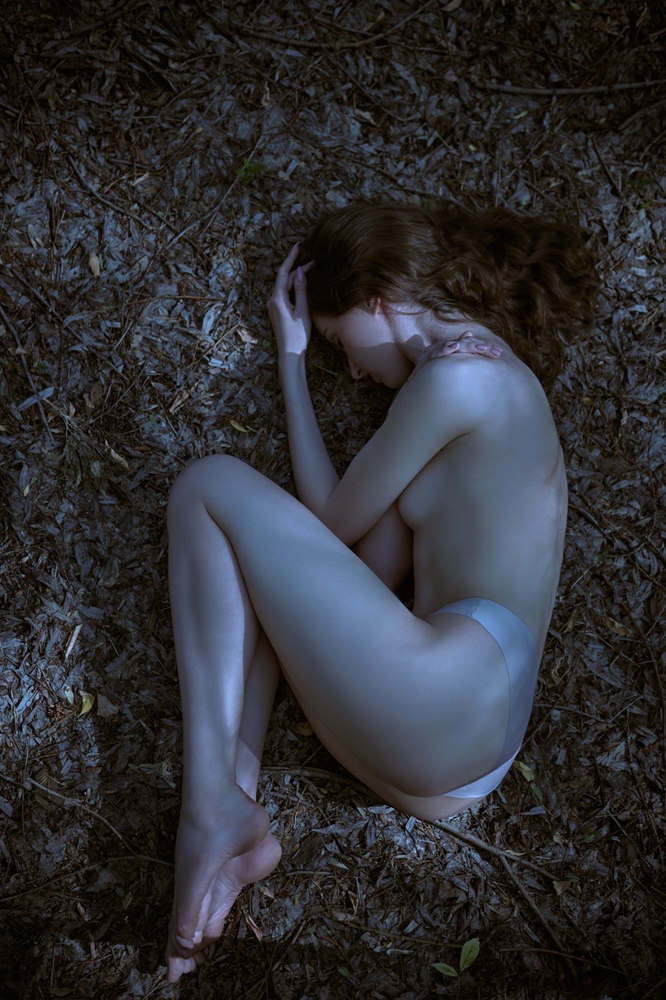
Photo by Kiselev Andrey Valerevich via Shutterstock
Editing nude photographs requires the same respect as the shoot itself.
- Basic adjustments: Exposure, contrast, and white balance corrections are essential.
- Enhance, don’t distort: Avoid manipulating body proportions or heavily airbrushing skin unless previously discussed.
- Texture matters: Keeping natural skin texture adds realism and honesty to the work.
- Mood through toning: Black-and-white conversions can highlight form and shadow, while warm tones can add intimacy.
The editing stage is where you finalize the story. Ask yourself: does this edit enhance the mood I wanted, or does it distract from it?
Ethics and Legal Considerations

Photo by Alexander Krivitskiy on Unsplash (license)
- Age verification: Always confirm your model is of legal age, with government-issued ID.
- Model releases: Signed documents protect both parties and clarify usage rights.
- Copyright: The photographer typically owns the images, but models may restrict distribution through contract.
- Publication: Know where you can share. Social media often bans nudity; galleries and print publications may have guidelines.
- Cultural sensitivity: What’s seen as art in one culture may be taboo in another. Be mindful of your audience.
Following these rules isn’t just about legality — it’s about respect.
Tips for Growing as a Nude Photographer
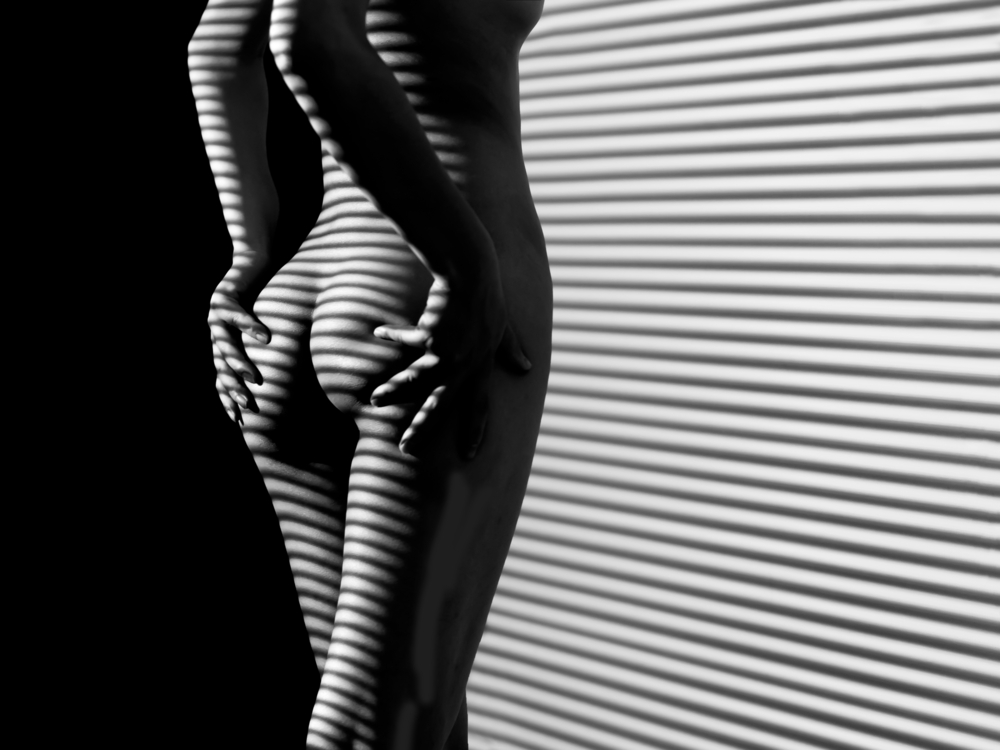
Photo by DKai via Shutterstock
- Start with workshops: Practicing in a structured environment with professional models gives confidence.
- Study the masters: Look at how Weston used form, or how Bernhard used light. Learn by analyzing their techniques.
- Practice lighting: Try photographing draped fabric, mannequins, or self-portraits to understand how light behaves on the human form.
- Build slowly: Don’t rush to create a huge portfolio. Curate a few strong images that reflect your vision.
- Seek feedback: Share with trusted mentors or communities, not just online strangers. Constructive critique accelerates growth.
Above all, remember that confidence builds over time. The more you practice, the more natural the process becomes.
A Celebration of Humanity
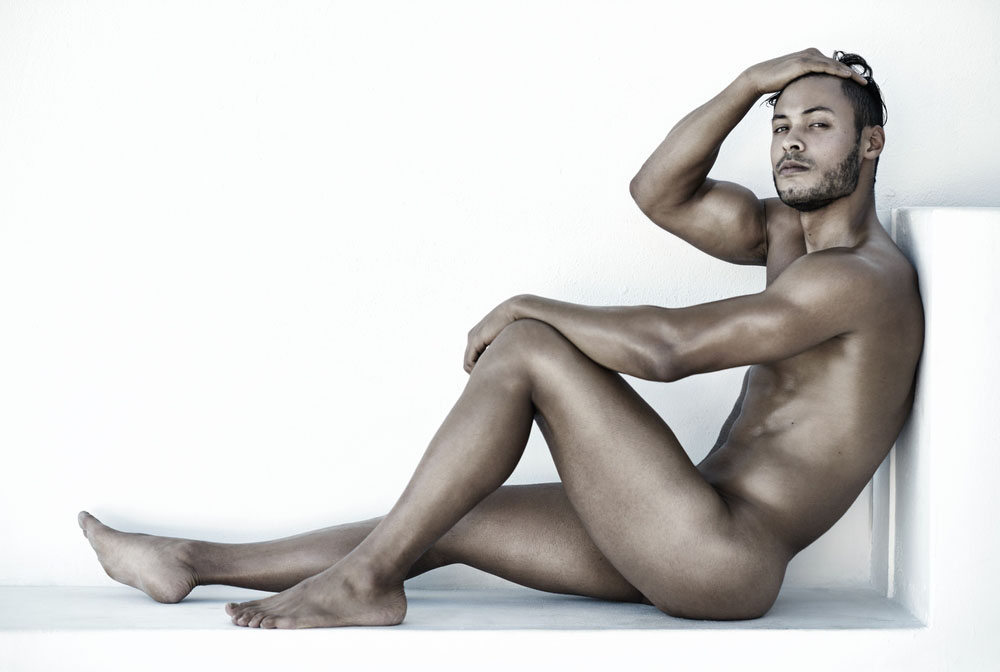
Photo by PeopleImages.com – Yuri A via Shutterstock
Starting in nude photography is both exciting and daunting. There’s the challenge of working with a vulnerable subject, the responsibility of ethics and professionalism, and the technical demands of lighting and composition. But there’s also immense creative reward.
When you approach it with respect, storytelling, and collaboration, nude photography becomes more than images of bodies. It becomes art — a celebration of humanity, vulnerability, and beauty.
If you’re a beginner, take it step by step. Start with learning light. Build trust with your models. Keep your editing respectful. And above all, remember that your role is to honor the story, not just capture the form.
With patience and intention, you’ll discover that nude photography isn’t just about what’s seen — it’s about what’s felt. And that’s what makes it one of the most powerful forms of art.
FAQs
What is nude photography?
Nude photography is a genre that focuses on the artistic representation of the human body without clothing. It emphasizes storytelling, emotion, and aesthetics, rather than mere nudity, using light, composition, pose, and symbolism to convey meaning.
Is nude photography suitable for beginners?
Yes, but it requires preparation, respect, and professionalism. Beginners should start by understanding the art form, practicing lighting and posing with clothed models or mannequins, and building confidence before working with nude subjects.
How do I find models willing to work in nude photography?
Beginners can connect with experienced nude models through modeling platforms like Model Mayhem, PurplePort, or social media photography groups. Workshops and figure study classes are also excellent ways to practice in a safe, professional environment while building trust and collaboration.
What type of lighting works best for nude photography?
Soft, natural light from windows is ideal for beginners, as it creates intimacy and flattering shadows. Studio lighting with softboxes or umbrellas can also be used to shape the body and set mood. Understanding how light affects form and emotion is key to storytelling in nude photography.
What should I include in a model release?
A model release should clearly outline the usage rights of the images, consent for nudity, and any restrictions on publication or sharing. It protects both the photographer and the model and ensures that the shoot is conducted professionally and ethically.
Hero photo by luxora via shutterstock

